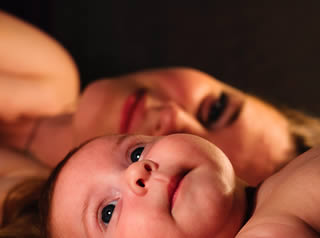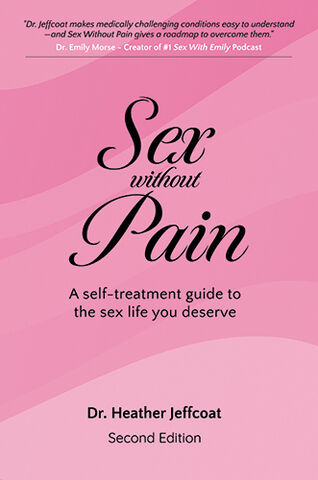Alphabetical Index of Articles on Women's Sexual, Pelvic Floor, and Reproductive Health
Bustle: If You Have Difficulty With Orgasms, This Simple Exercise Might Help

Difficulty With Orgasms?
Believe it or not, you can exercise your way to a better sex life.
There’s no equipment required, and you can do it pretty much anywhere — yes, even in the middle of a boring Zoom meeting. You’ve likely heard that pelvic floor muscle exercises, more commonly known as kegels, are something women do to keep things tight down there, especially after giving birth. But there’s so much more to it than that. Whether you’re having difficulty with orgasms or your libido is lower than you’d ideally like it to be, the sexual benefits of kegel exercises are worth giving this simple workout a try.
So what are kegels, exactly? According to Heather Jeffcoat, a doctor of physical therapy who specializes in female sexual function, kegels are an isolated contraction of your pelvic floor muscles. This muscle group forms a hammock at the base of your pelvic organs and does a number of vital things — supports posture, prevents urine leakage, and, delightfully, assists in “optimizing” your orgasms.
Glamour: 9 Best Kegel Weights, According to Pelvic-Floor Experts

How and why you'd want to give your vagina a workout.
January 8, 2021
You've got your at-home workout equipment, signed up for a wellness app, and maybe even a meal kit—but what have you done for your vag lately? The best Kegel weights, as well as smart trainers and machines, exist to strengthen your pelvic floor. Unsure what the pelvic floor even is? Think of it as a hammock that supports some very important organs, like your uterus, bladder, and bowels—and keeps you from going number one or two when you have to go. The pelvic floor enables childbirth, but it's also a major player in your sex life.
How do Kegel exercises help strengthen your pelvic floor?
Kegel exercises, whether you choose to use a product or not, can help. These exercises involve a series of contracting and relaxing your pelvic-floor muscles to help strengthen them.
Heather Jeffcoat at Greatist | For the Love of Your Pelvic Floor, Stop Kegeling so Much
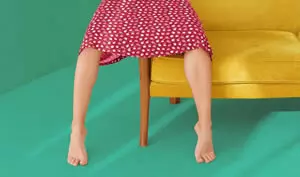
The website "Greatist" recently penned a quite informative article on Kegels, and of course they reached out to Heather Jeffcoat for her expert opinion!
“The pelvic floor muscles are just like any other voluntary muscle in the body, so we can treat them in a similar fashion as we’d treat other muscles: with manual therapy, corrective exercises and nervous system relaxation,” explains Jeffcoat.
From the Greatist "about us" page:
We cover the health and wellness stuff that matters — plus anything else that's cool, important, or maybe even life-changing. Our goal is to help you take healthy — or healthy-ish — actions every day to live your best life. We give you the tools. You make the rules.
Heather Jeffcoat at Hellahealth.com | Kegels Are Not the Only Option for Treating Incontinence
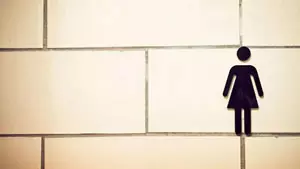
Why Kegels Are Not the Only Option for Treating Incontinence
Femina Physical Therapy is rapidly becoming recognized as a leader in the field of physical therapy for women of all ages, and pelvic floor therapy in particular. As a result, Femina PT founder Heather Jeffcoat, DPT is finding herself in demand more than ever for her valuable insights into a number of pelvic floor related topics.
In this case the discussion centers around how kegels are not the only option for every pelvic floor issue that women often face.
Heather Jeffcoat in New York Magazine's "The Strategist"

I was featured in New York Magazine's (@nymag) "The Strategist" column (@thestrategist) in an article on the best Kegel exercisers. But when they contacted me, I asked if they could include that Kegels may not be right for everyone, and I’m SO glad they did.
I LOVE Kegels, don’t get me wrong, but they simply are not the magical solution for every pelvic floor problem.
Some big signs you should STOP doing your Kegels (at least for now) are:
International Journal of Childbirth Education | Early Post Partum Recovery

Early Post-partum Recovery
International Journal of Childbirth Education. September 2009.
Heather Jeffcoat, DPT
Many providers will recommend starting pelvic floor physical therapy post-partum after six weeks, However, those first six weeks are an essential period where pelvic floor physical therapy could and should begin. It's the time to not just retrain your pelvic floor muscles, but also retrain your posture, support you with breeastfeeding postures to minimize discomfort and help you return to the activities you love without putting unnecessary strain on your pelvic floor. This article was written as part of a series I developed to support women during pregnancy and post-partum. Advocate for yourself to get started with post-partum pelvic floor physical therapy before six weeks!
After birth, the first six weeks are a critical period to begin exercise to get your body into pre-pregnancy shape. But, where to begin? Many changes occur in the musculoskeletal system during pregnancy and birth. The hormone Relaxin has influenced every joint in your client's body, creating ligamentous laxity which will last for 3-4 months post-delivery. This effect is longer if your client is breastfeeding. Their center of gravity is suddenly shifted, which can create problems with balance.
The abdominal muscles become gradually overstretched and weak with pregnancy. The hip flexor and lower back muscles tighten as they are placed in a shortened position due to postural changes that occur during pregnancy. Additionally, the pelvic floor muscles are stretched relatively quickly during vaginal birth, and tearing may occur. Unfortunately, these muscles do not immediately return to their pre-pregnancy states.
Prevention.com | Here’s Which Pelvic Floor Strengtheners Actually Work, According to Experts
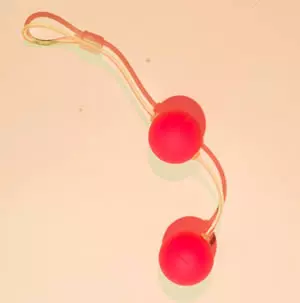
These gadgets claim to kick up your Kegels, but are they worth the money?
By Sharlene Breakey - Jan 12, 2021
Google “Kegel trainer” and up pops a dizzying array of gadgets that look like sex toys but are meant to strengthen the pelvic floor, the muscles that cradle the bladder, uterus, and bowel.
According to the National Institutes of Health, a quarter of women in this country have a pelvic floor issue, causing problems like painful sex, weakened orgasm, leaky urine, and constipation.
There’s An App For That? Medical Pros Rank Top SmartPhone Apps For Pelvic Floor Exercises

There really is an app for everything… even pelvic floor exercises!
And research proves supervised pelvic floor home exercise programs can reduce treatment time and result in significant improvement over in-office therapy alone.
So why don’t all my patients have pelvic floor apps? Especially at the beginning of treatment, those exercises can be difficult enough to squeeze into a daily schedule without the added anxiety of scrolling through hundreds of options to find an affordable and reliable one; and no one wants to base sensitive healthcare decisions on anonymous user reviews.
Wouldn’t it be great if a medical expert could cut through all the clutter?
Well and Good | Your Pelvic Floor Muscles Don’t Always Benefit From Kegels
 Well + Good writer Hannah Schneider has made a habit of reaching out to me for my expertise, and this article on why pelvic floor muscles don’t always benefit from kegels is another great example of our collaboration. Here is a brief synopsis of the article, along with a link to the full article below.
Well + Good writer Hannah Schneider has made a habit of reaching out to me for my expertise, and this article on why pelvic floor muscles don’t always benefit from kegels is another great example of our collaboration. Here is a brief synopsis of the article, along with a link to the full article below.
Heather Jeffcoat, DPTWhy Your Pelvic Floor Muscles Don’t Always Benefit From Kegels
According to a Pelvic Floor Therapist
If you have a vagina, you’ve probably been told to “do your Kegels” as if the exercise is comparable to taking your daily vitamin or brushing your teeth.
Whether you saw it on Sex And The City, Oprah, or even TikTok—in pop culture, Kegels are widely considered as beneficial as daily push-ups or hamstring stretches. The thing is, Kegels aren’t like brushing your teeth: not everyone needs to do them. Sometimes they can even cause more harm to your pelvic floor muscles than good, according to Heather Jeffcoat, DPT, owner of Femina Physical Therapy in Los Angeles.
Well and Good: 3 Pelvic Floor Workouts That Support Better Sex
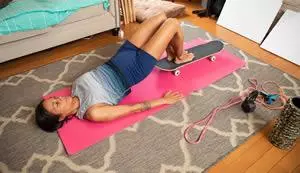 Journalist Natalie Arroyo Camacho went searching for pelvic floor workouts that support better sex, and I was more than happy to help out. Here is a brief synopsis of the article, along with a link to the full article below.
Journalist Natalie Arroyo Camacho went searching for pelvic floor workouts that support better sex, and I was more than happy to help out. Here is a brief synopsis of the article, along with a link to the full article below.
Heather Jeffcoat, DPTPelvic Floor Workouts That Support Better Sex
Every person has a pelvic floor, a sling of muscles connecting the pubic bone and the tailbone, and it's connected to so many health functions, including bowel and bladder control, supporting the pelvic organs, and contributing to optimum sexual health. And with respect to that last factor, there are specific ways to set yourself up for success—namely with pelvic floor workouts for better sex.
What are Kegels?
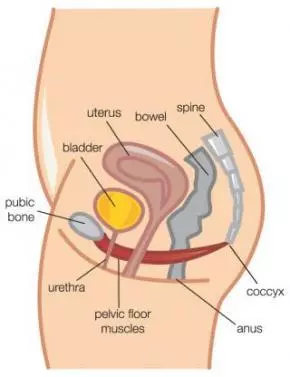
What are Kegels?
Kegels are a contraction of the pelvic floor muscles, sometimes referred to as “PC Contraction”. PC is short for “pubococcygeus”, the name of one of the many pelvic floor muscles.
However, after over a decade of practice, I have found that simply telling a patient to “Do Kegels” is usually not enough. Often, women perform pelvic floor exercises incorrectly, or do not do an amount appropriate for their strength levels. This finding has been confirmed by Bump et alin an August 1991 article from the American Journal of Obstetrics & Gynecology, “Assessment of Kegel pelvic muscles exercise performance after brief verbal instruction”.
Why you should be doing Kegels RIGHT NOW!

Wondering why you should be doing Kegels?
In my early days of being a pelvic floor PT, I was convinced I had the answer to all the woes of the pelvic floor. One word – Kegels. As I’ve developed professionally, I certainly realized Kegels have their place.
However, they do not have their place with all things related to the pelvic floor. There are specific instances when Kegels (also known as PC or pelvic floor muscle contractions) are the answer. I’m a firm believer in doing a Kegel program combined with a core strengthening program that will address the bigger picture. Here’s why you should be doing Kegels if you meet certain criteria:
Why You Should STOP Doing Kegels NOW

Should You Stop Doing Kegels?
Read on for the answer.
In my last post, “Why You Should Be Doing Kegels NOW”, I went over the specific diagnoses that tend to benefit most from doing pelvic floor muscle exercises. However, not all issues related to the pelvic floor are appropriate to prescribe pelvic floor muscle exercises for. In fact, doing Kegels can actually be harmful and counterproductive to your symptoms if you have certain diagnoses, and it may be best if you stop doing kegels depending on your diagnosis.



